
The Musée d'Orsay is a museum in Paris, France, on the Left Bank of the Seine. It is housed in the former Gare d'Orsay, a Beaux-Arts railway station built between 1898 and 1900. The museum holds mainly French art dating from 1848 to 1914, including paintings, sculptures, furniture, and photography. It houses the largest collection of Impressionist and post-Impressionist masterpieces in the world, by painters including Berthe Morisot, Monet, Manet, Degas, Renoir, Cézanne, Seurat, Sisley, Gauguin, and Van Gogh. Many of these works were held at the Galerie nationale du Jeu de Paume prior to the museum's opening in 1986. It is one of the largest art museums in Europe.
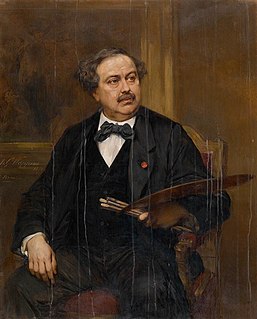
Egide Charles Gustave, Baron Wappers was a Belgian painter. His work is generally considered to be Flemish and he signed his work with the Dutch form of his name, Gustaaf Wappers.

The Wallraf–Richartz Museum is one of the three major museums in Cologne, Germany. It houses an art gallery with a collection of fine art from the medieval period to the early twentieth century.

Gustave Franciscus De Smet was a Belgian painter. Together with Constant Permeke and Frits Van den Berghe, he was one of the founders of Flemish Expressionism. His younger brother, Léon De Smet, also became a painter.

The Musée Fabre is a museum in the southern French city of Montpellier, capital of the Hérault département.

The Museum of Fine Arts in Ghent, Belgium, is situated at the East side of the Citadelpark.

Isabella Brant was the first wife of the Flemish painter Peter Paul Rubens, who painted several portraits of her.
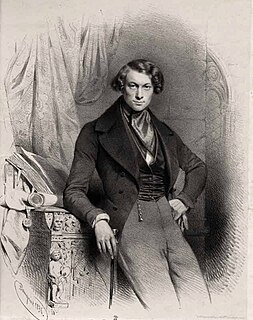
Nicaise de Keyser was a Belgian painter of mainly history paintings and portraits who was one of the key figures in the Belgian Romantic-historical school of painting.
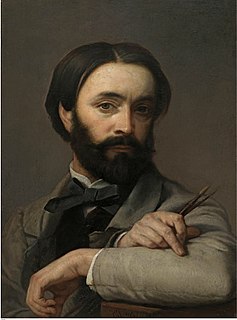
Charles Verlat or Karel Verlat was a Belgian painter, watercolorist, engraver (printmaker), art educator and director of the Antwerp Academy. He painted many subjects and was particularly known as an animalier and portrait painter. He also created Orientalist works, genre scenes, including a number of singeries, religious compositions and still lifes.
The Royal Academy of Fine Arts of Ghent, is one of the oldest art schools in Belgium. It is now part of the Hogeschool Gent.
Despite its size, Belgium has a long and distinguished artistic tradition that goes back to the Middle Ages, considerably pre-dating the foundation of the current state in 1830. Art from the areas making up modern Belgium is called in English Netherlandish up to the separation with the Netherlands from 1570 on, and Flemish until the 18th century.
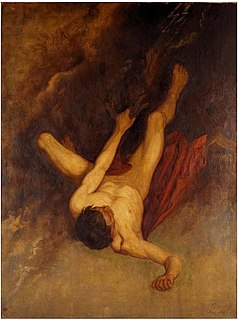
Adolphe Pierre Sunaert, Adolphe Sunaert or Adolf Sunaert was a Belgian painter, printmaker, teacher and author. He played a role in the organization and conservation of the art collections of the city of Ghent.

The Marquess of Becelaere is a former French title, now extinct. Becelaere, in Flanders, is an old spelling of Beselare, in Zonnebeke.
The Flemish Art Collection is a consortium or partnership between three museums in Flanders, Belgium: the Royal Museum of Fine Arts Antwerp, the Groeningemuseum in Bruges, and the Museum of Fine Arts, Ghent.
Van de Woestijne is a Flemish surname. Notable people with the surname include:
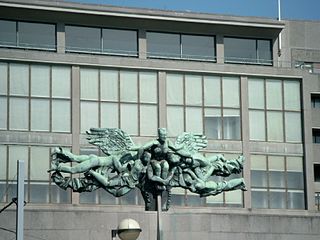
Jozef Cantré was a Belgian sculptor and illustrator. He was one of the main artists in the development of the Flemish Expressionism style.

Flemish Expressionism, also referred to as Belgian Expressionism, was one of the dominant art styles in Flanders during the interbellum. Influenced by artists like James Ensor and the early works of Vincent van Gogh, it was a distinct contemporary of German Expressionism. Contrary to the more rebellious and erotic nature of many German Expressionist works, the Flemish art of the School of Latem was more oriented towards the farming life, and was expressed in earthy colours and vigorous brushwork. It was also in general more oriented towards France and Brussels than to Germany, and incorporated elements of Fauvism and Cubism, for example the interest in "primitive" art, of both the ethnic and folk traditions. Flemish Expressionists like Spilliaert were more influenced by Ensor and Symbolism, or like Wouters were closer to the vibrant colours used by the Fauvists. The main proponents were Gust De Smet, Constant Permeke and Frits Van den Berghe.

The Phoebus Foundation is an art foundation established in Jersey in 2011. It is based on Anglo-Saxon law with philanthropic objectives. The foundation acquires works of art, guarantees a professional framework of conservation and management, and looks after the conservation and restoration of the objects. In doing so, it focuses on scientific research. It shares the results of this all with the widest possible audience, through exhibitions, cultural expeditions, symposiums and publications.

Adrienne is a 1919 painting by the Flemish artist Gustave Van de Woestyne, now in the Royal Museum of Fine Arts, Antwerp. Its subjects are Adrienne de Zutter and her dog. It shows the influence of the English landscape artist William Turner, whose work de Woestyne had probably seen during the war.

Chernihiv Regional Art Museum is located in the street Muzeyna, 6, Chernihiv, Ukraine.
















